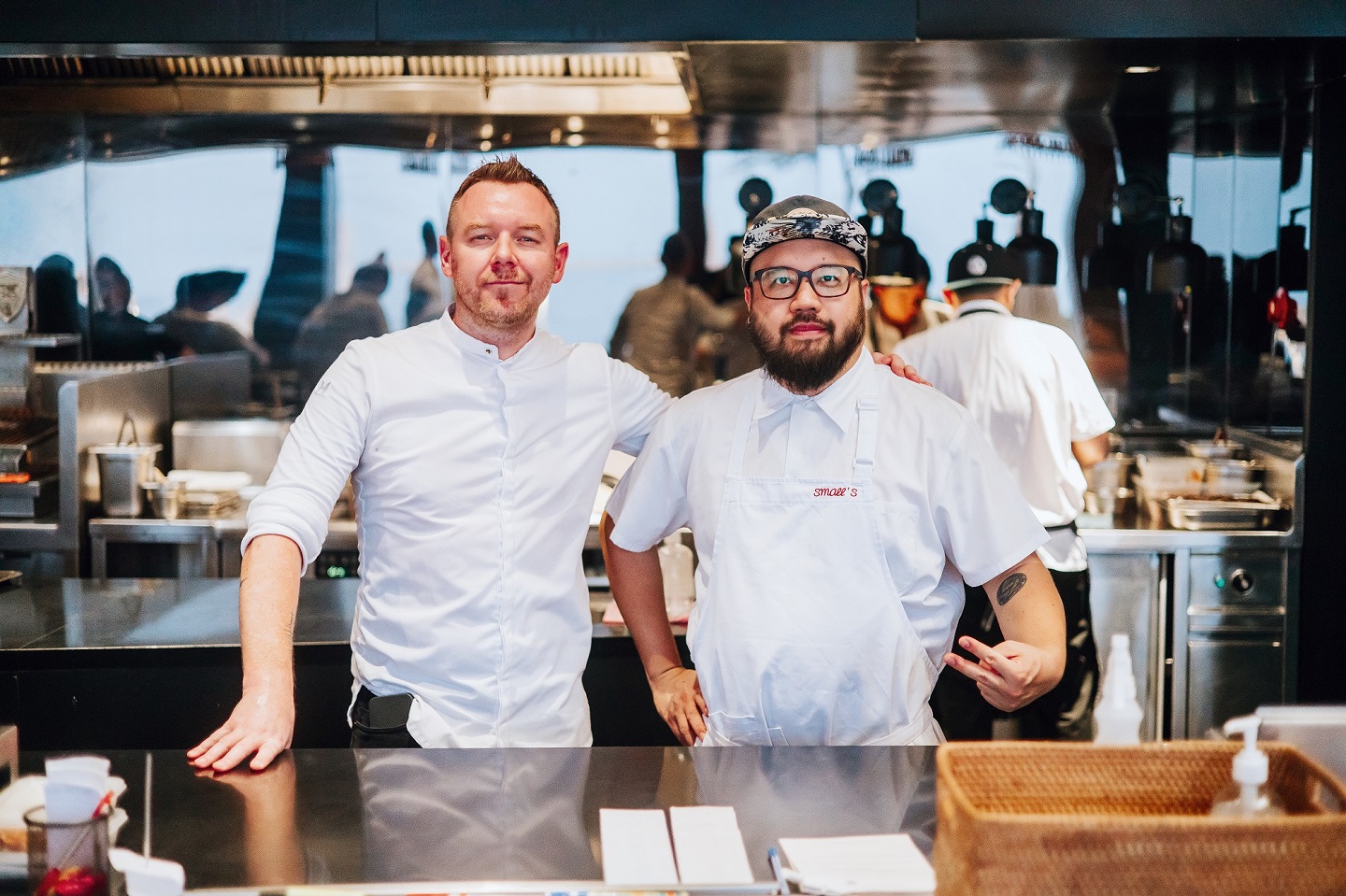
Walsh (left) and Shen (All photos: One&Only Desaru Coast)
It was a beautiful evening at One&Only Desaru Coast, Johor. The gloomy sky cleared after a drenched afternoon and we were able to soak in the mesmerising landscape of the sea-facing Ember Beach Club.
Gastronomes, who were mainly from neighbouring Singapore, flocked to the acclaimed restaurant for an exciting one-night-only four-hands dinner presented in the second edition of Ember Curates: Andrew & Friends.
Established late last year by Andrew Walsh, who is also the culinary concept lead of Ember Beach Club and owner of Cure Restaurant, Butcher Boy and Catfish Izakaya in Singapore, Ember Curates showcases collaborative efforts between the Irish-born Michelin-starred chef and invited guests to present a wide range of culinary delights from around the world.
This time around, Walsh welcomed Bjorn Shen, celebrity chef, resident judge of MasterChef Singapore and owner of Artichoke Singapore, to join him for a unique gastronomic experience at the luxurious hideaway down south.
“Everything about last night was a highlight. This has been one of my favourite events, and I do a lot of collaborations overseas. I’ve done three of these in the last three months, and I have one more coming up in Manila,” Shen divulges.
27052023_oneonly_colossal_upload_clean_201.jpg
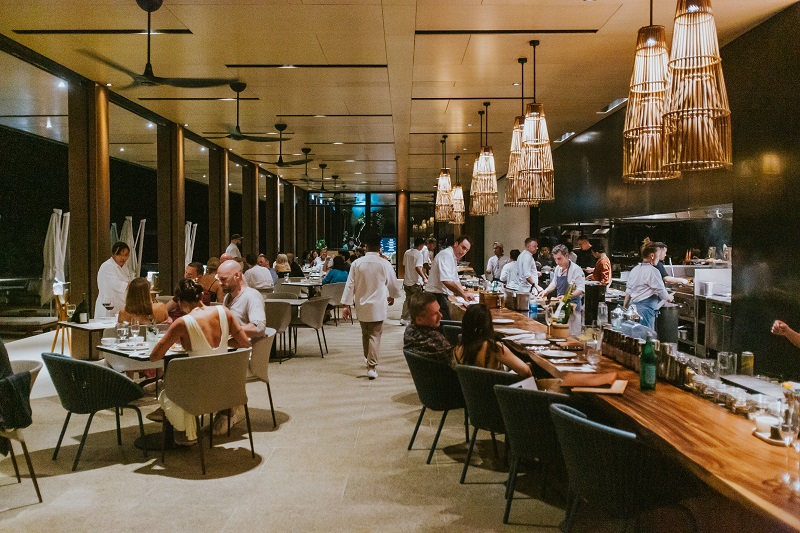
The friendship between the chefs started over a decade ago and blossomed with time, as both are currently based in the Lion City. They occasionally ran into each other at dining affairs and that was how the idea for the showcase came about.
“I saw him making kebabs at a four-hands event and said, ‘We have to get you to the resort one day’,” Walsh says.
Merging Japanese seafood-centric dishes from Catfish Izakaya with flavourful Middle Eastern cuisine from Artichoke, the four-hands dinner introduced an 11-course menu.
Working closely to come up with a list of dishes that would represent their signature and expertise, the duo decided on the final menu with the help of Catfish Izakaya’s head chef, Jared Ng, who was Shen’s student from a culinary school.
“It’s a nice little triangle,” says Walsh.
Of the courses offered — three snacks on arrival, four mezze, three mains and one dessert — the Grilled Unagi and Foie Gras Donabe, with tabbouleh of Malaysian herbs and vegetables, was a crowd favourite. It was relatively straightforward to assemble, Shen says.
27052023_oneonly_colossal_upload_clean_114.jpg
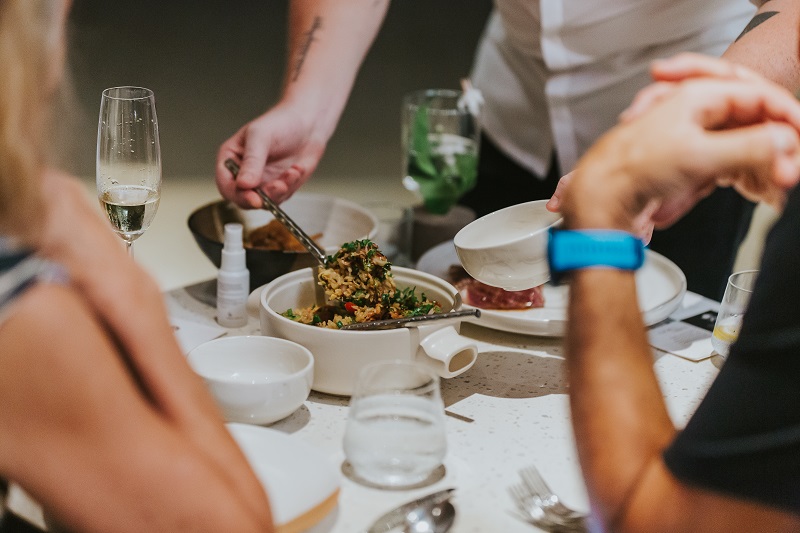
“I was extraordinarily excited about the rice with tabbouleh. The idea came from my visit to Catfish. Jared presented a menu he thought could work well for this collaboration. He brought out this superb bowl of claypot rice with unagi and it was amazing. I was thinking, ‘How do I not make this worse?’”
Shen also wanted to ensure local elements were well presented in the line-up.
“I like to play with words. Since we are in Malaysia, I had to incorporate tabbouleh, which sounds like tak boleh [cannot] in Malay. Everywhere I go, I try to make tabbouleh using local herbs and vegetables since it is quite an easy meal to prepare.”
The Grilled Unagi and Foie Gras Donabe was brought to our table by the chefs, who eagerly explained the ingredients, before mixing thinly sliced herbs and vegetables, including baby tomato, mint, onion, Vietnamese coriander and winged bean, into a claypot of rice with unagi.
Unlike the rest of the dishes, this meal was put together just the day before the event, but the partners were fairly confident that it would turn out great, and it certainly did. “There are some things that if they work in your head, you know they are likely to work in real life. Rice and herbs cannot go wrong. You know they will taste similar to nasi ulam.”
Walsh and Shen placed emphasis on the ingredients they used.
27052023_oneonly_colossal_upload_clean_156.jpg
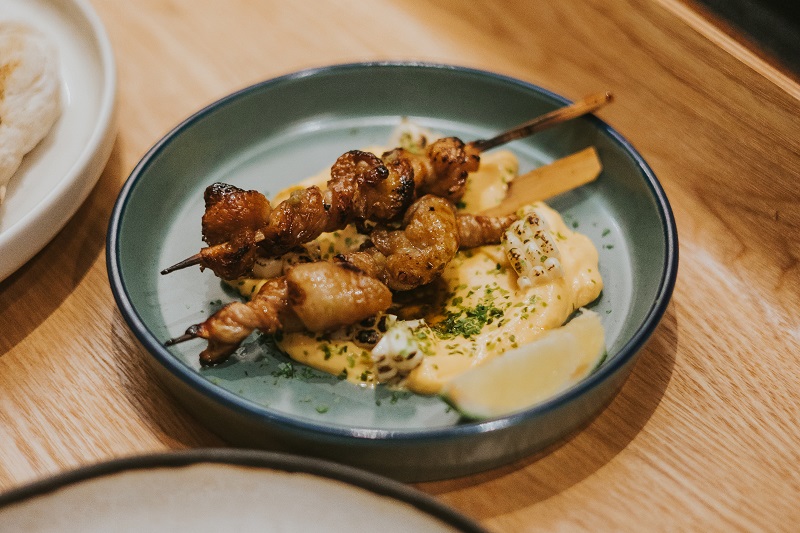
“That’s the basics. You cannot cook good food without good ingredients. It’s our job to get the most out of them, and the style and techniques kind of wrap themselves around that,” says Walsh.
One&Only is widely known for its dedication to sustainability. This effort was showcased in the menu by way of maximising the parts of animals the chefs could use.
“The Grilled Chicken Skin Skewer was made using [usually-unsexy] chicken skin. Instead of getting rid of that part, we turned it into a delicious meal,” Walsh says. “I believe using all cuts of animals is important to avoid wastage.
“The sourcing of ingredients is sustainable in terms of how we look at the producers.” He adds that his team picked herbs from the resort’s garden for the menu.
Another star of the night was the Seared Hokkaido Scallop, served with gochujang butter and cured egg yolk in a huge shell. It had a hint of spice from the Korean condiment, made using red chillies, glutinous rice and fermented soybeans. Long Aged Flatbread topped with lots of za’atar surprisingly paired well with sauce from the scallop. Alternatively, guests could also dip the bread in Beetroot Borani, a creamy yoghurt dressing that came with grilled radicchio.
Walsh and Shen are like-minded individuals who share a passion for food and its endless possibilities. Ember Curates gave them the opportunity to learn about each other’s prowess, which Walsh deemed the most important aspect in culinary world.
27052023_oneonly_colossal_upload_clean_173.jpg
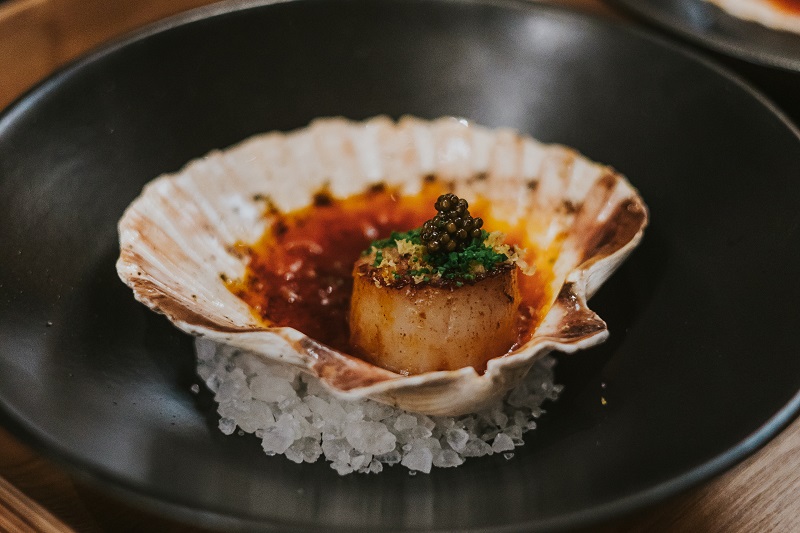
“When you stop learning, life gets boring and uninteresting. I have seen a lot of talented chefs go stale because they stop doing things. Collaborations help me stay motivated. They get me out of Singapore, as I always have a new project to work on outside the country.
“I get to meet great people and build a supportive community — that connection and networking is truly valuable because this environment can get lonely sometimes,” Walsh says.
Shen, a bubbly, adventurous person, shares his sentiments.
“I love mixing cuisines. I’m all about mash-ups. The more different-sounding the cuisines, the more exciting the mash-up. So, Japanese and Middle Eastern, we said, ‘Bring it on’.
“We always find a parallel when blending two cuisines by looking for ingredients that can work for both worlds. Even if your idea does not work the first time, you will eventually get something out of it if you keep trying. There are no two cuisines that cannot go together. While I’m answering this, I’m already thinking about other potentially epic fusion cuisine.”
“Maybe we can try Indonesian versus Indian next?” Walsh chimes in. “We can think of food like music. Some musicians remix classical music with modern jazz, or modern rock with a touch of classic. It is the same with food, which is about mixing flavours and making the combination work.”
This article first appeared on July 10, 2023 in The Edge Malaysia.


